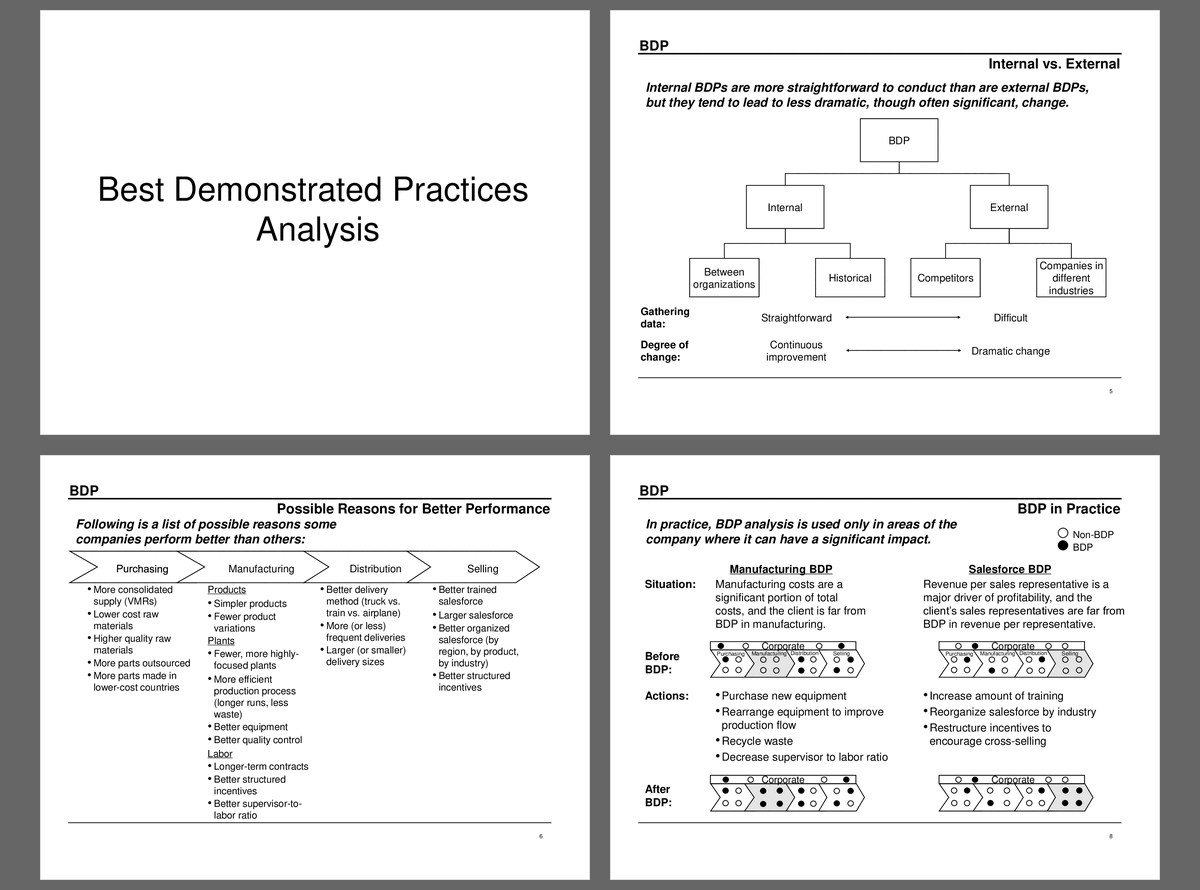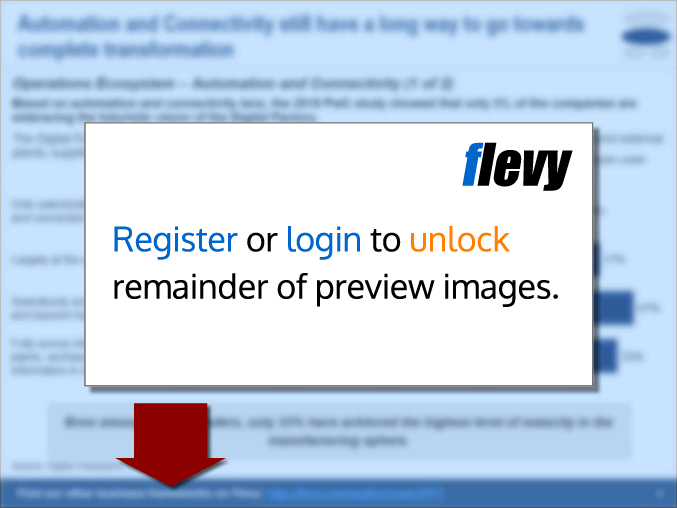Best Demonstrated Practices Analysis (PowerPoint PPT Slide Deck)
PowerPoint (PPT) 43 Slides
BEST PRACTICES PPT DESCRIPTION
BDP is used to identify the best practices – those leading to the most revenue at the least cost – inside of or outside of a company. Internal BDPs are more straightforward to conduct than are external BDPs, but they tend to lead to less dramatic, though often significant, change.
This document delves into the practical application of Best Demonstrated Practices (BDP) across various organizational processes. By examining both internal and external BDPs, it offers a comprehensive approach to identifying and implementing practices that maximize revenue while minimizing costs. The document outlines a step-by-step methodology for conducting a BDP analysis, ensuring that organizations can systematically identify and adopt the most effective practices.
The analysis begins with selecting comparable organizations and disaggregating them into major processes. This granular approach allows for a detailed comparison and identification of best practices. The document also emphasizes the importance of adjusting data for uncontrollable elements, ensuring an apples-to-apples comparison. This meticulous approach helps in quantifying the potential impact of adopting BDPs, whether in terms of cost savings or revenue increase.
The document provides a real-world example involving a sticky tape manufacturer, illustrating how BDPs can lead to significant cost savings. By focusing on specific processes like rewinding, slitting, and packaging, the case study demonstrates the tangible benefits of BDP implementation. The analysis also highlights the importance of considering uncontrollable costs and adjusting comparisons accordingly to ensure fairness and accuracy.
The document includes a priority matrix to help organizations focus on areas with the greatest potential benefits. It also provides an action plan template, outlining steps, impact, timing, and responsibilities. This practical tool ensures that organizations can effectively implement BDPs and track their progress, leading to sustained improvements in performance and cost-efficiency.
Got a question about the product? Email us at support@flevy.com or ask the author directly by using the "Ask the Author a Question" form. If you cannot view the preview above this document description, go here to view the large preview instead.
Source: Best Practices in Best Practices PowerPoint Slides: Best Demonstrated Practices Analysis PowerPoint (PPT) Presentation Slide Deck, Documents & Files
BEST PRACTICES PPT SLIDES










